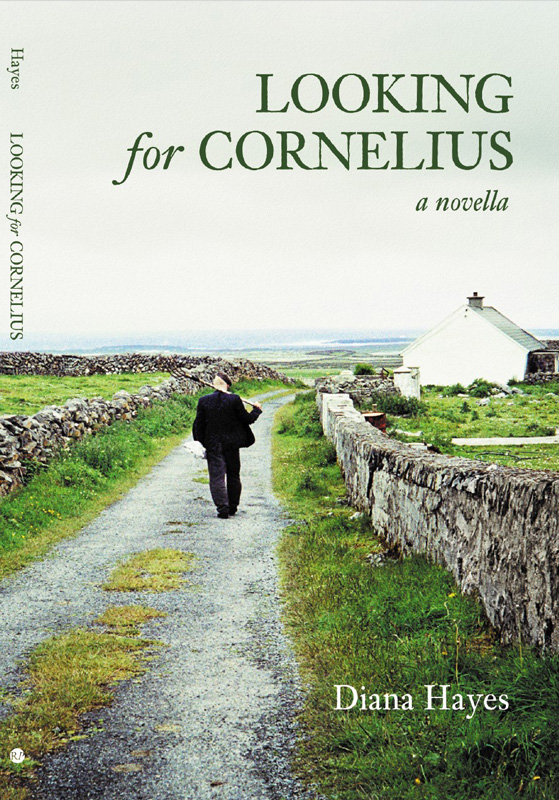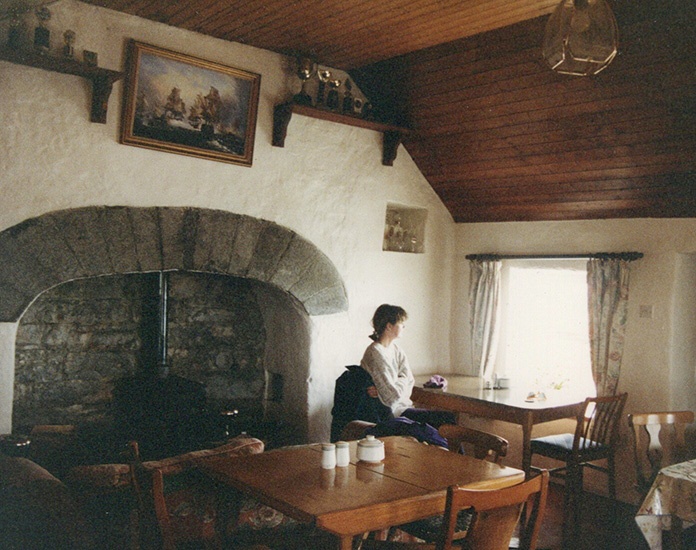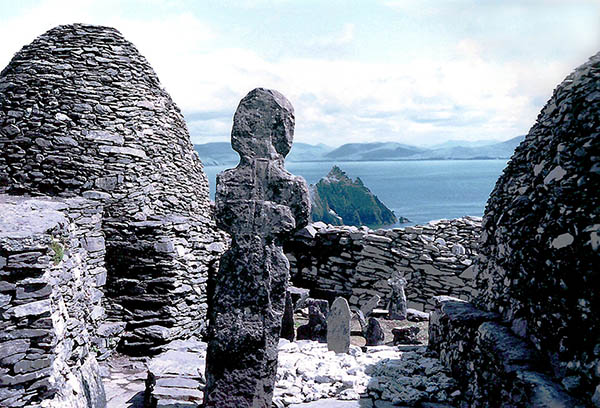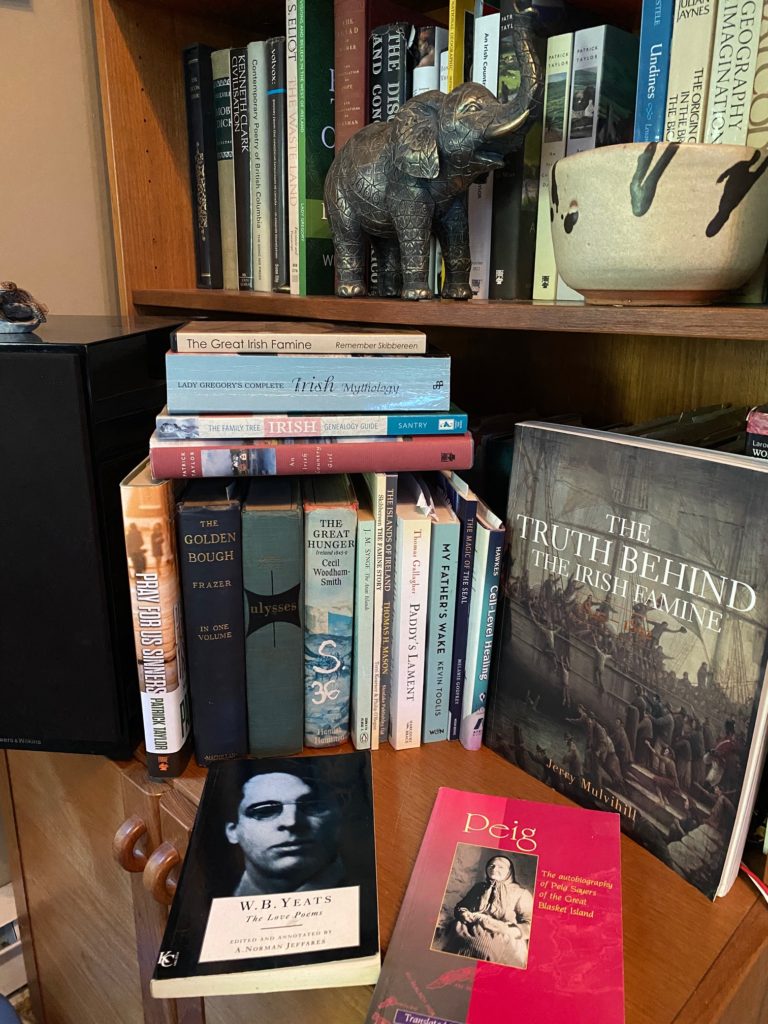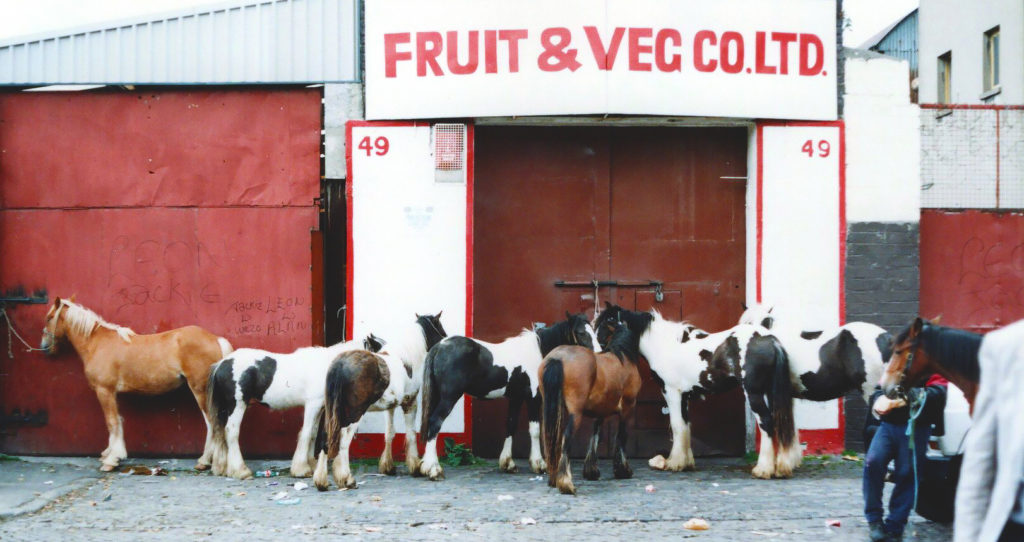I received letters recently from Angela and George McWhirter after they read my newly published novella, “Looking for Cornelius.” I thought the book might conjure a memory or two of their own ancestors and homeland in Ireland. With their permission, I share their lovely letters:
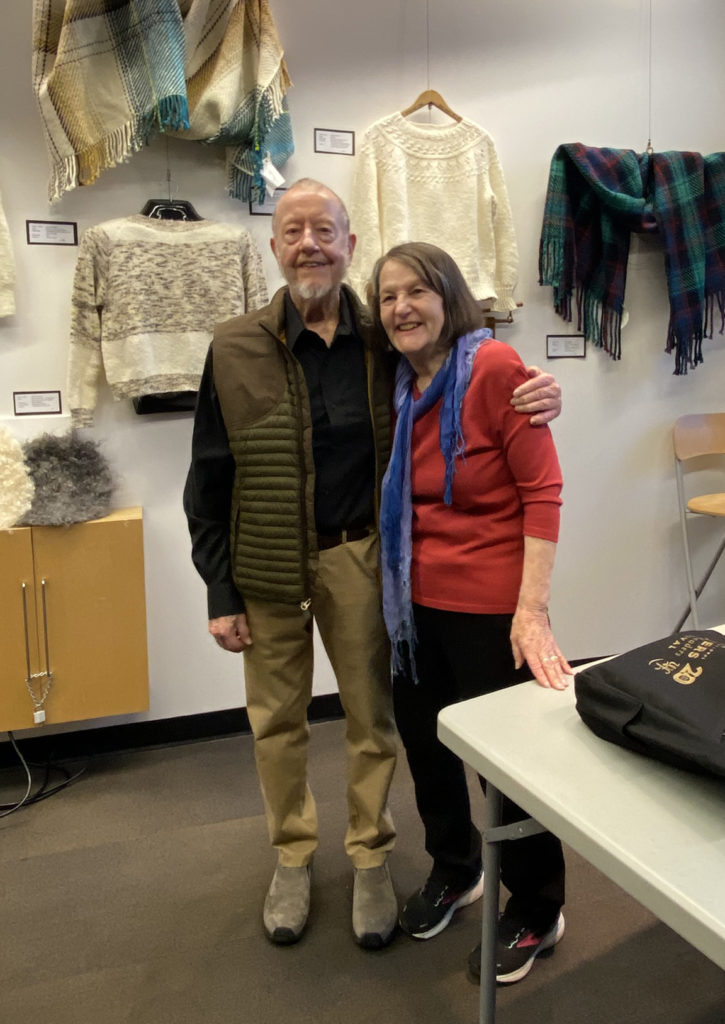
“I have had the pleasure of reading Looking for Cornelius at night in bed before sleep, which is probably the best place and time to read your book, which has so much dream and premonition in it, but the readings had a real effect on me. For a start, I loved the cover. It reminded me so much of my father coming home from work at the Belfast Shipyard down to Carnalea off the Belfast County Down Railway train. He would swing up the road with his brown shop coat under his arm to be laundered. So I was taken back somewhere already before I opened the first page on what turned out be a fine balance between an adult story of a young woman going back to find her identity and past at the hard heart of the Irish famine, and a young adult one of a boy going back to the land of the fiddle music to find his future as a brilliant fiddler.
Like Angela I liked the recitation of Cornelius’s story at the end, and the wake, having been to them as a young boy and having had to kiss the corpse of relatives (my mother was 45 when I was born into a world of ageing aunts and uncles, and grandparents). The elaboration of ceremonials for the wake set up an otherworldly suspense ahead of the recitation and gifting of Cornelius’s tin box. Not the least, the story was a great guide through Glendalough and to a hub of dream in St.
Kevin’s bed, not to mention all the other places the tale took me to, starting with the cover. A good book about someone’s past always takes a reader some way into their own and Looking for Cornelius did that for me.”
George
PS: [in another note from George:]
I knew the novella was a limb growing out of your family tree, from what you had told us. The dramatic details I did not know and those are what made the reading for me, the places and people also made the reading a relish.
I have a line in one of my poems about what my sister told me before I left for Canada. She meant it to turn my sense of family history inside out or upside down, or something. It meant I was free to make up a lot of my past on my father’s side.
About the kneecapping, the imp in me wonders if they are carried out in order to take a disgusted shot at those knees that barely appear as the march under those saffron and tartan kilts. A shot at the hidden heritage that many of the kneecappers never got to sport or wear. Consider the above a typical McWhirter meander of the mind into the ridiculous.
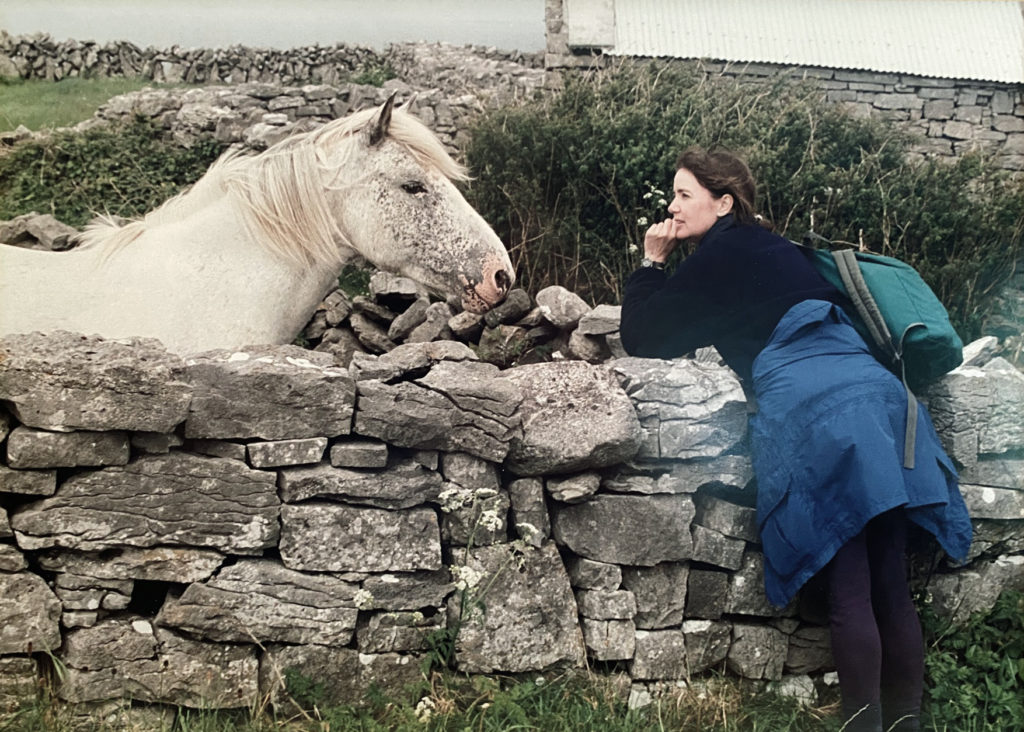
Connemara Pony on Inis Mór
“George was halfway through the novella when some ASAP reading came up. I grabbed the book, promising to return it to his bedside table when I’d read it.
‘When you start reading and get into the story, you want to find out “what happens in the end”. LOOKING FOR CORNELIUS has that “what happens in the end” essential ingredient.
I wrote to you before that I grew up with stories of The Famine never being allowed to leave food on the plate. However, many do not know how horrible the Irish Famine was, and your novella does much to right this.
Do you in fact have a great grandfather who was a tinker? If so, we share this interesting heritage. Mine was a Maguire—-from the West. Irish Travellers do a certain reputation. Myself I don’t go in for bare knuckle fighting, but I love Staffordshire dogs and pride myself on being a clean housewife. And Grania’s dog, Lupe, if in Ireland could pass for a lurcher.
My favourite chapter was “This is My Story — the Wake of Cornelius”.
We used to have several Folkways LP’s of Irish fiddle music, the classics mentioned in your book. I wish we still had them, and I could listen again.”
Angela Mairead Coid
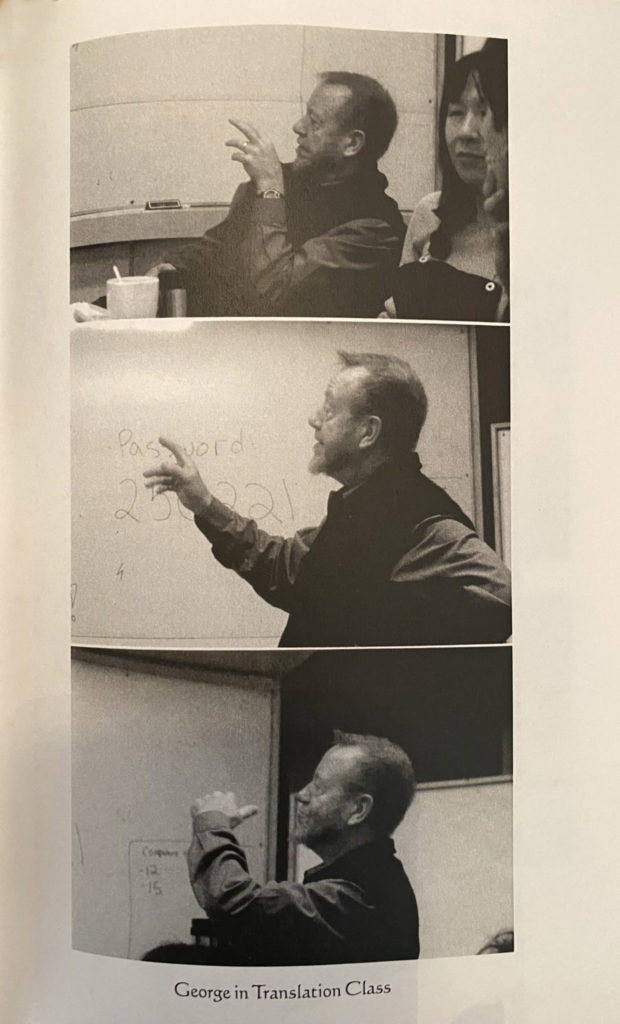
Photo from “The Book of George”
Has it really been 50 years?!
I first met George and Angela at a mutual friend’s cabin out at Tugwell Creek, between Sooke and Jordan River, way back in the summer of 1976. A few Irish whiskey in tumblers and much yarning took us all into the wee hours as we sat by the stone hearth of the little sea stuck cabin. It is a stretch of beach I often visit still while I’ve been working on a new poetic sequence, “Hawking the Surf.”Old journals take me back to those years in the mid-70s, studying with many fine and prolific writers: Robin Skelton at the helm, Red Lillard, Derk Wynand, Jeni Couzyn, Rona Murray, Mike Doyle, and lucky to be in the fall ’75 class with visiting Irish poet, John Montrague.
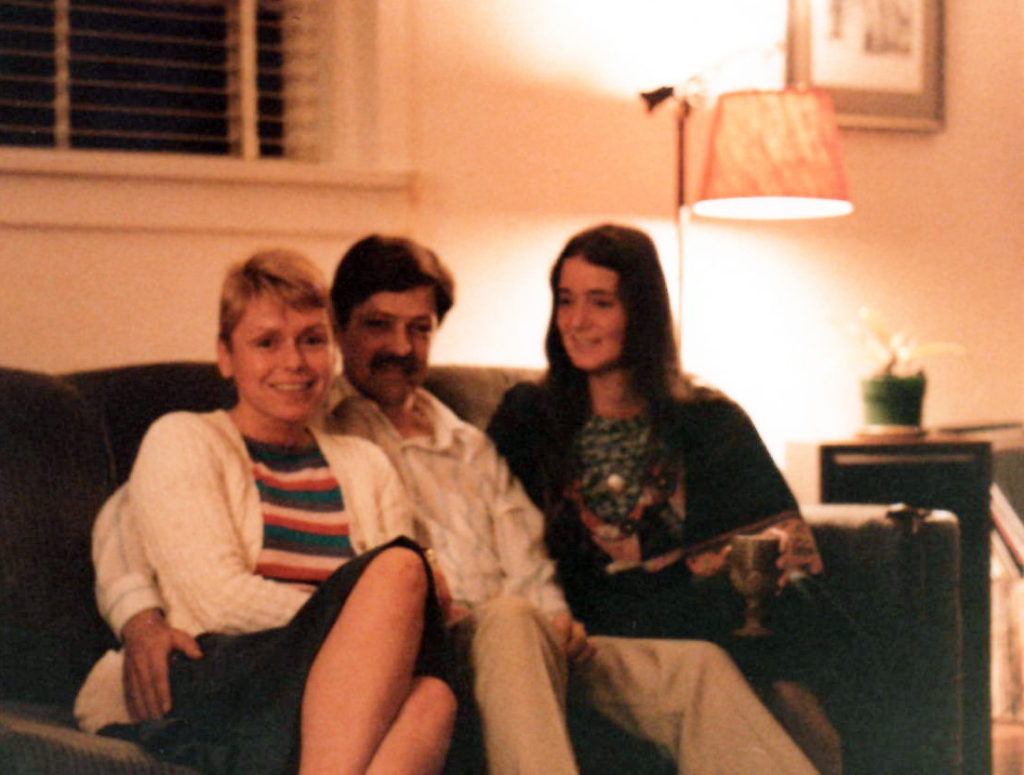
Eva and Derk Wynand with Diana, Victoria 1977
Then from ’80 – ’82 I attended the MFA program at UBC and was very lucky indeed to study with George. He became my thesis advisor, and we did tutorials on short fiction and poetry. I also joined the editorial team at Prism international, a requirement of the MFA program. I had the great good fortune to meet Tennessee Williams, who was writer in residence that year. We published his final play, “Red Devil Battery Sign” in Prism (I still have the issue!) and the next year he died.
Poets by nature draw from material that can follow them for decades, hiding out in old stacks of files or in journals, looking out from a photograph or two, sometimes waking us up in vivid or disconcerting dreams. Poems and stories can be the ambassadors to the Otherworld, and this was how my recently published novella, “Looking for Cornelius” began.
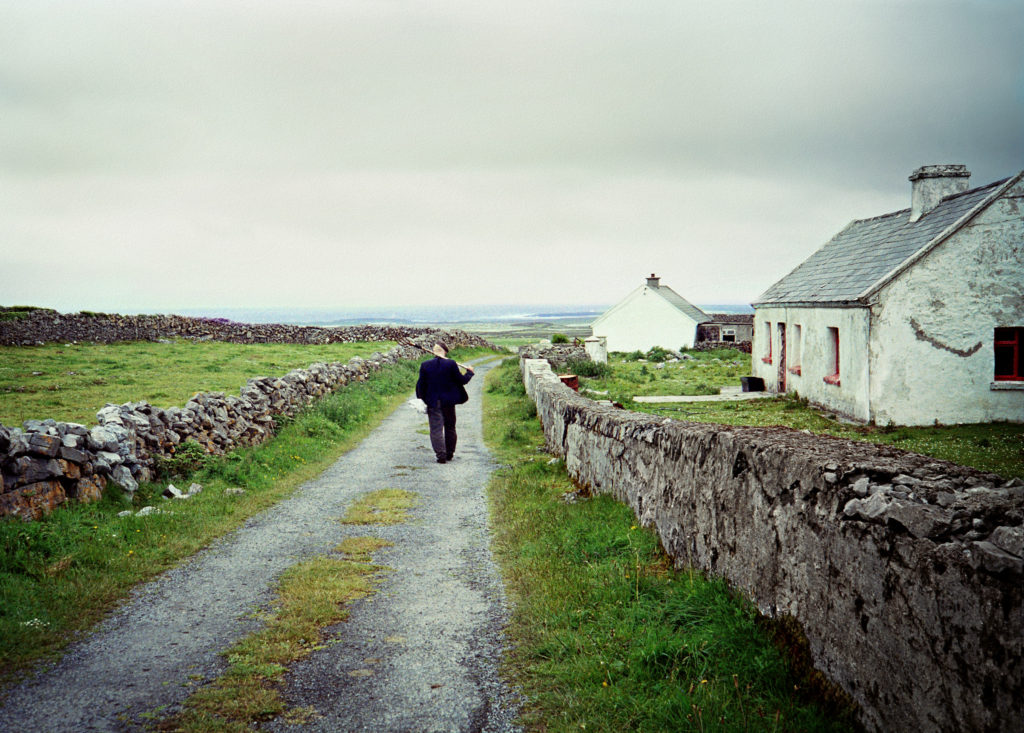
Near Kilmurvey Beach, Inis Mór

